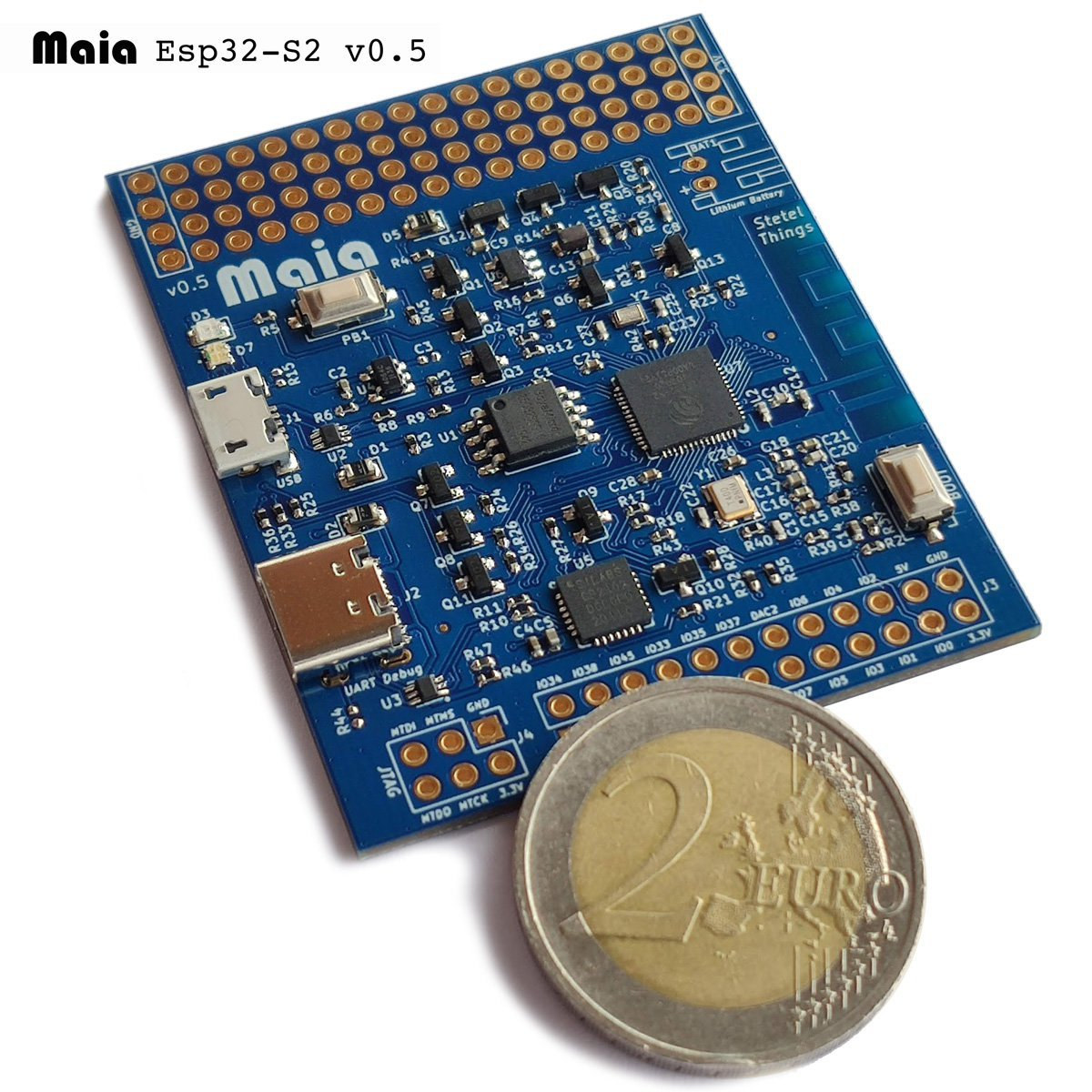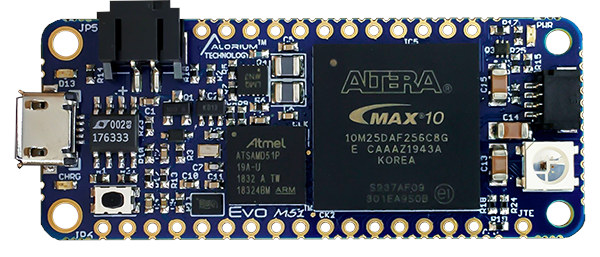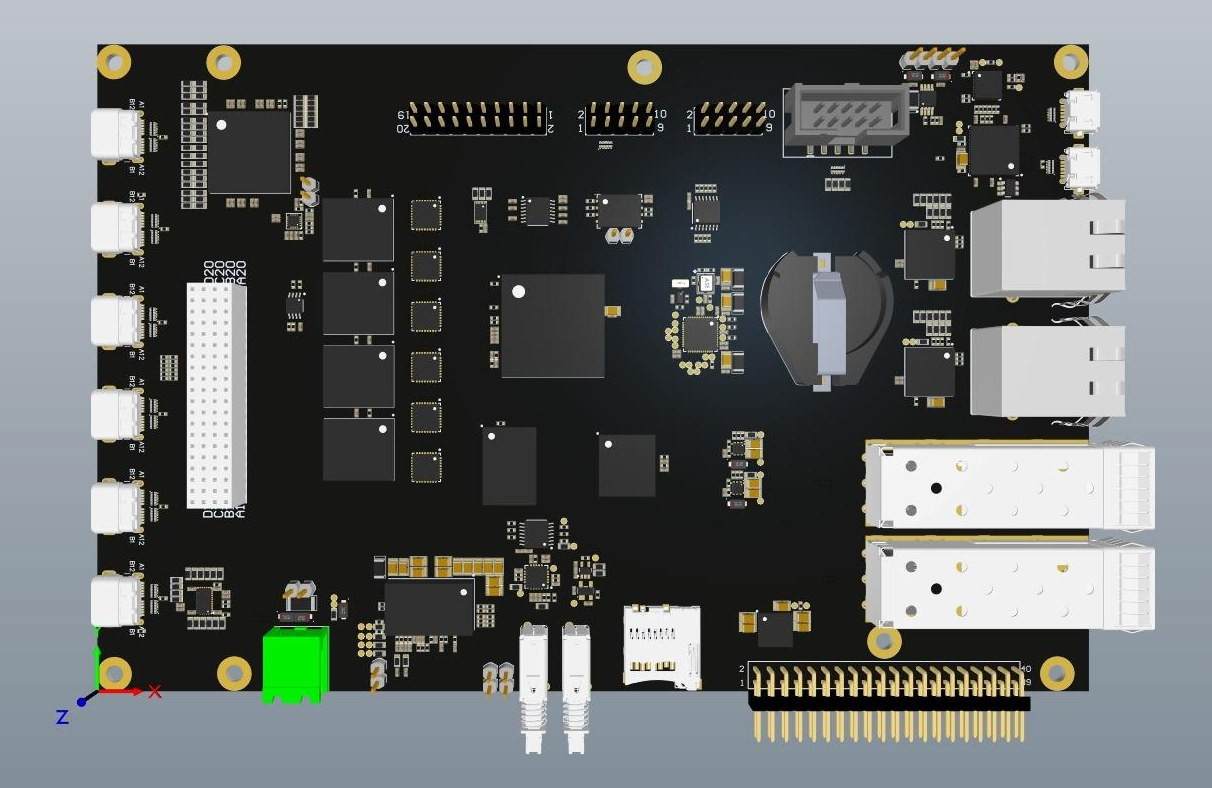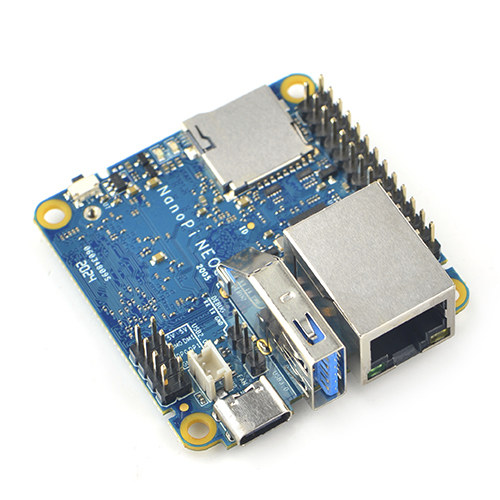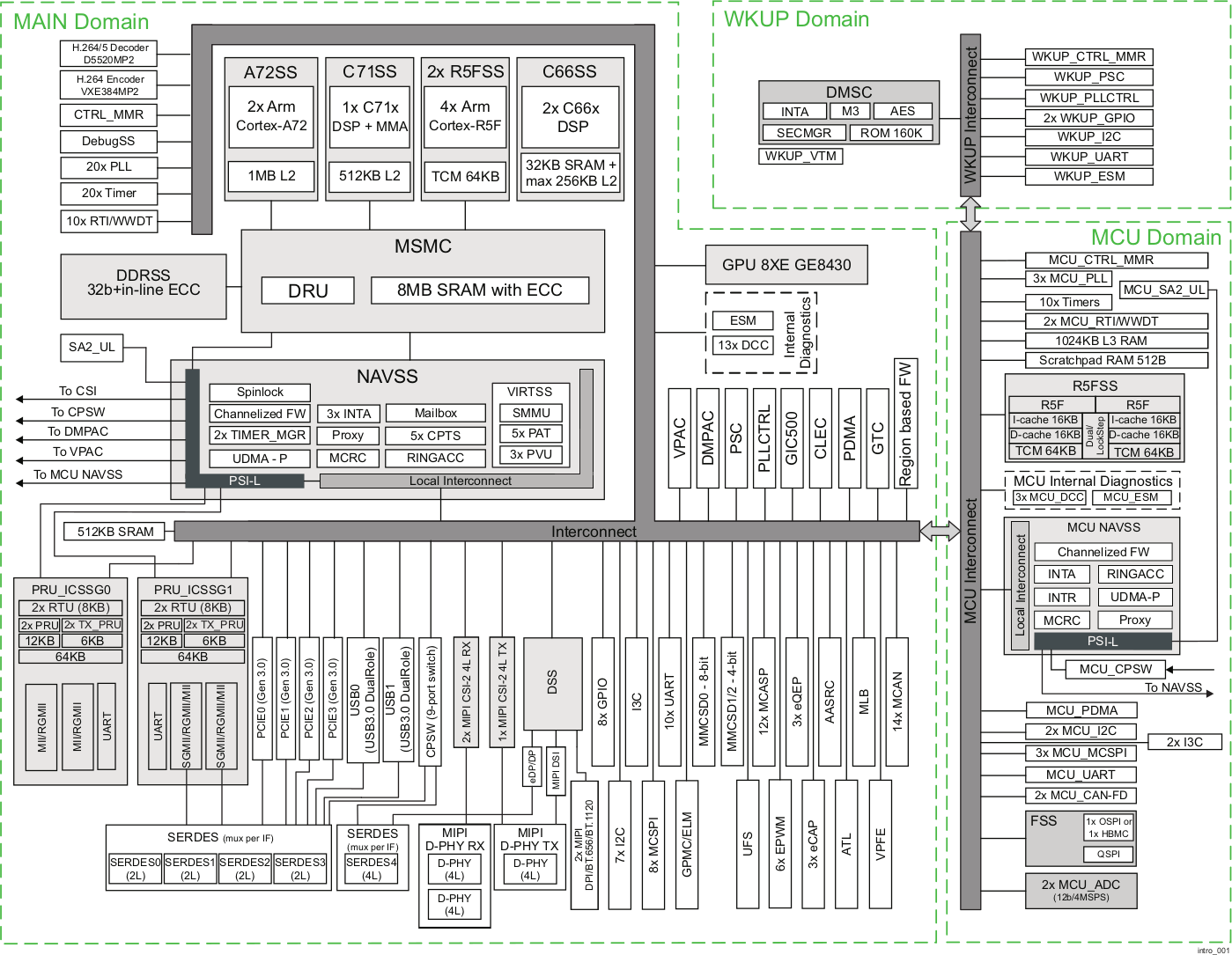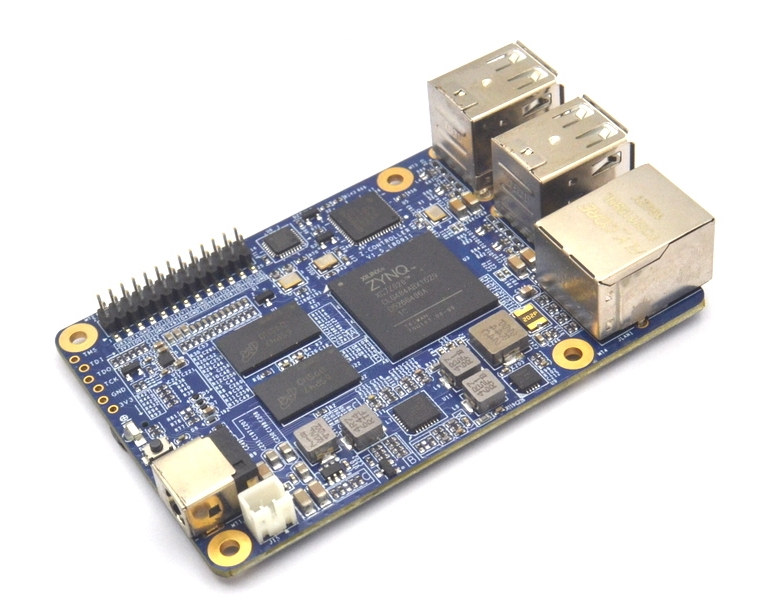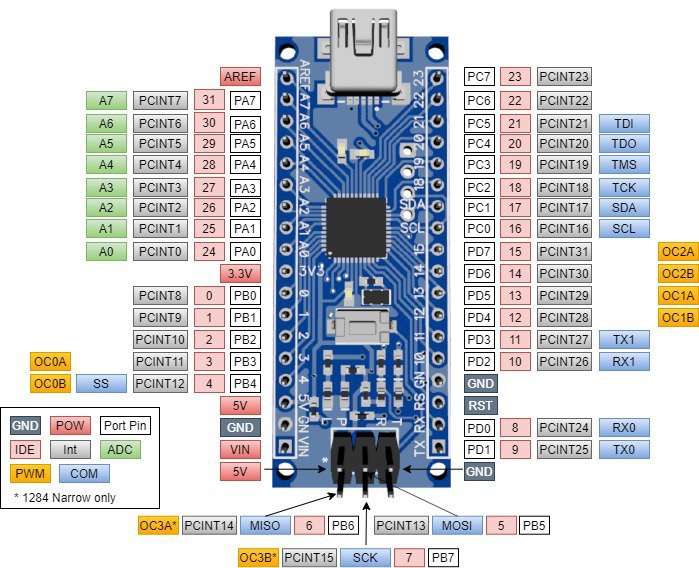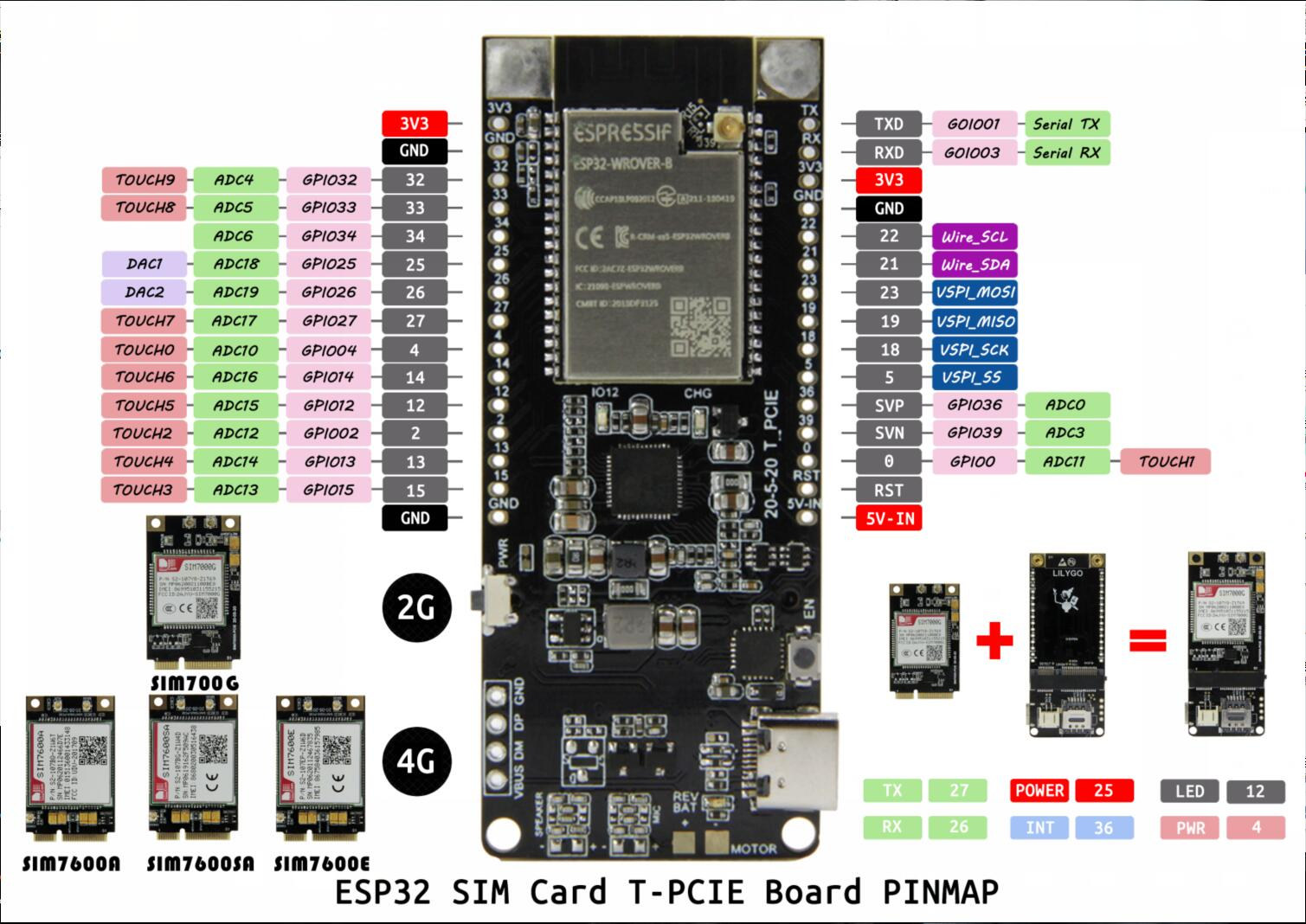One of the advantages of the new ESP32-S2 processor is that it offers a USB OTG interface. So far few boards took advantage of the extra interface, and one of the rare ones is Cucumber ESP32-S2 board with a USB-C OTG port. There’s another option with a slightly unusual form factor thanks to Stetel Things’ Maia ESP32-S2 development board with the typical USB-C port for power and debugging, plus a micro USB OTG port, and a small prototyping area. Maia ESP32-S2 development board specifications: SoC – Espressif System ESP32-S2 single-core LX7 processor at up to 240 MHz with an ultra-low-power (ULP) RISC-V CPU, 320KB RAM Storage – 4MB flash Connectivity – 802.11b/g/n WiFi 4 with on-board PCB antenna USB 1x Micro USB OTG port for data and power 1x USB-C port for programming (virtual UART) and power Expansion 24-pin I/O header “Playground” prototyping area with 4x 18 through holes including […]
Feather-Sized Evo M51 Board Combines Atmel SAMD51 MCU with Intel MAX 10 FPGA
Arduino unveiled its first FPGA board around two years ago with MKR Vidor 4000 combining an Intel Cyclone FPGA with Microchip SAMD21 Cortex-M0+ MCU in a form factor similar to Arduino Zero. But in case you are looking for an even smaller Arduino compatible FPGA board, Alorium Technology’s Evo M51 might be exactly what you are after. The Adafruit Feather-sized board is equipped with an Atmel SAMD51 Arm Cortex-M4F microcontroller coupled with an Intel MAX 10 FPGA. Evo M51 specifications: MCU – Microchip (Atmel) SAMD51 Arm Cortex-M4F microcontroller clocked at 120 MHz with 512KB flash, 192 KB SRAM FPGA – Intel MAX 10 (10M25) FPGA with 25K LEs, 675Kbit block memory Storage – 2MB external flash USB – 1x micro USB port for power and programming I/O Digital 55x Total Digital I/O – 21x through-hole/castellated vias, 34x additional castellated-only 6x digital pins shared with analog pins 3.3V Inputs, 3.3V Outputs […]
Upcoming SAVVY-V Open Source RISC-V Cluster Board Supports 10GbE via Microsemi PolarFire 64-bit RISC-V SoC
RISC-V based PolarFire SoC FPGA by Microsemi may be coming up in the third quarter of this year, but Ali Uzel has been sharing a few details about SAVVY-V advanced open-source RISC-V cluster board made by FOSOH-V (Flexible Open SOurce Hardware for RISC-V) community of developers. It’s powered by Microsemi Polarfire RISC-V SoC MPFS250T with four 64-bit RISC-V cores, a smaller RV64IMAC monitor core, and FPGA fabric that allows 10GbE via SFP+ cages, and exposes six USB Type-C ports. The solution is called a cluster board since up to six SAVVY-V boards can be stacked via a PC/104+ connector and interfaced via the USB-C ports. SAVVY-V cluster board preliminary features and specifications: SoC – Microsemi Polarfire RISC-V SoC MPFS250T with a quad-core 64-bit RV64IMAFDC (RV64GC) processor @ up to 667 MHz, a RV64IMAC monitor core, and FPGA fabric with 250K logic elements; 3.0 CoreMarks/MHz, 2.0 DMIPs/MHz; Also compatible with MPFS160T, […]
Tiny NanoPi NEO3 SBC Targets Networked Storage with GbE and USB 3.0
Once upon a time, FriendlyELEC launched a Raspberry Pi Zero competitor for headless applications with Allwinner H3 powered NanoPi NEO, which was then followed with NanoPi NEO2 equipped with a more powerful Allwinner H5 processor and Gigabit Ethernet, and less than two years ago, NanoPi NEO4 was launched with Rockchip RK3399 hexa-core processor, 1GB RAM, and HDMI output. “Wait! What happened to NanoPi NEO3?!” you may ask. It probably got lost in the woods, but FriendlyELEC found it under a rock, and are about to launch NanoPi NEO3 SBC based on Rockchip RK3328 and offering a USB 3.0 port and Gigabit Ethernet network connectivity. NanoPi NEO3 specifications: SoC – Rockchip RK3328 quad-core Arm Cortex A53 processor with Mali-450MP2 GPU System Memory – 1GB or 2GB DDR4 Storage – MicroSD Slot for system boot and storage Video Output – N/A Connectivity – Gigabit Ethernet with unique MAC via RTL8211E PHY USB […]
J721E DRA829/TDA4VM/AM752x – Texas Instruments Cortex-A72 based Monster SoC’s
Texas Instruments unveiled their first 64-bit processor in 2018 with TI AM654 “Keystone III” quad-core Arm Cortex-A53 + dual lockstep Cortex-R5F processor designed for general embedded and industrial applications. The company is now working on a more powerful processor with J721E SoC with Cortex-A72 cores belonging to the K3 Multicore SoC architecture platform appearing in TI Linux git repository. Ti J721E is a monster of an SoC, not necessarily in terms of CPU processing power, but it has an amazing amount of features and peripherals. I’m not going to list all specifications of this monster SoC, and we’ll do with J721E highlights instead: CPU Dual Cortex-A72 up to 2.0 GHz in a single cluster Up to three clusters of lockstep capable dual Cortex-R5F MCUs @ 1.0 GHz AI Accelerator / DSP Deep-learning Matrix Multiply Accelerator (MMA) @ up to 1.0 GHz (8 TOPS for 8-bit inference) C7x floating-point Vector DSP […]
Sipeed TANG Hex is a Low-Cost Xilinx Zynq-7020 Arm FPGA Board
Last year, Sipeed launched a $5 FPGA board called Sipeed Tang and based on an entry-level Gowin GW1N-1-LV FPGA. But I had not noticed the company had also worked on a more powerful, yet still low-cost Xilinx Zynq-7020 board in a business card form factor not too dissimilar from the Raspberry Pi model B form factor. Meet Sipeed TANG Hex. So far a low-cost Zynq-7010 or Zynq-7020 board met you had to spend $99 to $199 with products such as MyIR Z-Turn and Digilent PYNQ-Z1. But Sipeed Tang HEX can be purchased for as little as $73 shipping on Aliexpress, or 439 RMB ($62) on Taobao for people based in mainland China. It might be tempting to get a low-cost board to get started, but is it worth it? Read on to find out. Sipeed TANG Hex specifications: SoC – Xilinx Zynq-7020 (XC7Z020-1CLG484) dual-core Arm Cortex-A9 processor and FPGA with […]
Pandauino 644/1284 Narrow are Compact ATmega644/1284 Arduino Boards (Crowdfunding)
Pandauino 644 Narrow and 1284 Narrow boards powered by Microchip ATmega644 and ATmega1284 8-bit AVR MCU in a compact form factor slightly larger than the official Arduino Nano. The Pandaunino boards also come with up to eight times more RAM, more flash, as well as ten extra digital I/Os compared to Arduino Nano while keeping software compatibility. Pandauino 644/1284 Narrow boards specifications: MCU 644 Narrow – Microchip ATmega644 8-bit AVR microcontroller with 64KB flash, 4KB SRAM, 2KB EEPROM 1284 Narrow – Microchip ATmega1284 8-bit AVR microcontroller with 128KB flash, 16KB SRAM, 4KB EEPROM USB – 1x Micro USB port for power and programming I/Os – 24x digital I/Os including up to 8x PWM (6x max for 644 Narrow), 8x analog I/Os, 1x SPI, 2x USART, 1x I2C Power Supply – 5V input with on-board 5V and 3.3V regulators. Max current – USB: 500 mA limited by a PTC. Vin: 800 […]
ESP32 Board Features mini PCIe & SIM Card Sockets for 4G LTE Connectivity
LilyGO has launched yet another ESP32 WiFi & Bluetooth IoT board. As its name implies, TTGO-T-PCIe board includes a mini PCIe socket that coupled with a SIM card socket allowing users to insert a 4G LTE mPCIe card to add cellular connectivity. The company also offers optional SIM7000 2G or SIM7600 4G LTE modems that come with LTE and GPS antennas. You should probably be able to add other cellular mini PCiE, as well as other wireless mPCIe modems for LoRa, Satellite communication, etc… (Finally most probably not) TTGO-T-PCIe board specifications: Wireless module – ESP32-WROVER-B with ESP32 dual-core wireless SoC with 520KB SRAM, WiFi and Bluetooth with on-board antenna, as well as 4MB flash, and 8MB PSRAM Connectivity 802.11 b/g/n WiFi 4 up to 150 Mbps (ESP32) Bluetooth 5.1 LE (ESP32) Optional wireless cards via mPCIe socket (I2C and UART), SIM card slot for 2G and 4G LTE cellular networking […]


